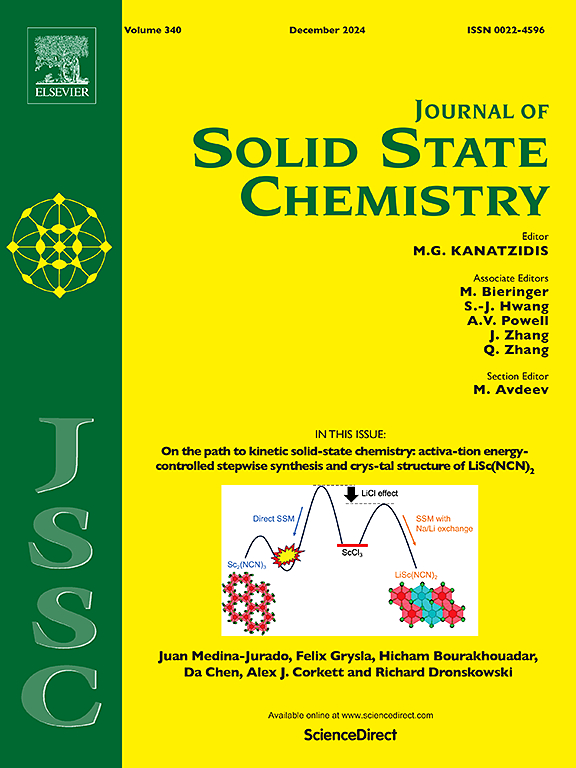Cu–Ir–B system: Phase equilibria, crystal structure, bonding and electronic structure of compounds
IF 3.2
3区 化学
Q2 CHEMISTRY, INORGANIC & NUCLEAR
引用次数: 0
Abstract
Phase relations in the ternary system Cu–Ir–B have been experimentally established for the isothermal section at 600 °C via electron microprobe and X-ray powder diffraction analyses. Reinvestigation of the binary systems pertinent to the concentration areas of the current study confirmed the existence and crystal structure of compounds α-Ir2B3-x and Ir3B4 and indicated slightly higher solubility of Ir in Cu as compared to literature data. The formation of β-Ir2B3-x was observed from ternary alloys annealed at 800 °C. Phase equilibria at 600 °C involve two previously reported ternary compounds, CuIr2B2-x (x = 0.52; space group Cmcm) and CuIrB (space group Fdd2). In addition, a new ternary compound Cu5+xIr5-xB2 (x = 1.05; space group ) was identified in as cast alloys. CuIr2B2-x and CuIrB crystallize with their own structure types while the new compound Cu5+xIr5-xB2 adopts the Pd5Cu5B2 structure type. The copper iridium borides obtained reveal different motifs of condensation of boron structural units. In the CuIr2B2-x structure, the Ir6 trigonal prisms (partly filled with B) inter-connect in two directions to form 2D layers; the blocks of three layers of prisms interchange along the longer axis of the unit cell with two stacked 44 Cu nets. Closely related arrangements are found in other intermetallic phases such as MAB phases. The building unit of CuIrB is a [BIr4] tetrahedron; the tetrahedra interconnect creating channels with interlinked and slightly waved chains of Cu. In the structure of Cu5+xIr5-xB2, the groups of four [BM6] trigonal prisms (condensed through common edges) join via common vertices to form a framework enveloping extensive Cu structural units reminiscent to those, found in the fcc copper lattice (Cu6 octahedron augmented into tetrahedron by adding copper Cu4 tetrahedra). Two ternary compounds, CuIr2B2-x and CuIrB were targeted for analysis of their electronic and band structure, chemical bonding and physical properties (electrical resistivity as a function of temperature). The chemical bonding analysis revealed partially covalent Ir–B bonding in the metal boride subunits in both compounds. According to Bader charges analysis, copper atoms donate their electrons to more electronegative iridium atoms. CuIrB and CuIr2B2-x are expected to be metallic from the DFT calculations with number of bands crossing the Fermi level in both SO and non-SO case in good agreement with resistivity measurements. CuIrB is characterized by a small eDOS of 0.45 states/eV∗f.u. on the Fermi level in comparison to a value of 2.75 states/eV∗f.u. for CuIr2B2-x. Both compounds are characterized by a low residual resistivity and a low Debye temperature.

求助全文
约1分钟内获得全文
求助全文
来源期刊

Journal of Solid State Chemistry
化学-无机化学与核化学
CiteScore
6.00
自引率
9.10%
发文量
848
审稿时长
25 days
期刊介绍:
Covering major developments in the field of solid state chemistry and related areas such as ceramics and amorphous materials, the Journal of Solid State Chemistry features studies of chemical, structural, thermodynamic, electronic, magnetic, and optical properties and processes in solids.
 求助内容:
求助内容: 应助结果提醒方式:
应助结果提醒方式:


